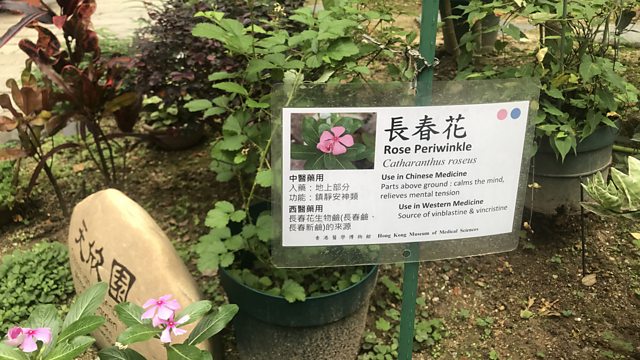How epidemics have helped to shape the city of Hong Kong
The legacy of epidemics in Hong Kong; How integrating Chinese and western medicine helps diabetic patients
The city of Hong Kong is shaped by epidemics – from the plague of 1894 to the outbreak of SARS in 2003.
Visible signs of the lessons learned are found on the Taipingshan Medical Heritage trail, including Blake Garden, the Tung Wah Hospital and the Hong Kong Museum of Medical Sciences, previously the first pathology lab on the island.
Faith Ho, former Professor of Pathology at the University of Hong Kong and one of the founders of the museum, explains how crowded living conditions in the 19th century helped the plague to spread quickly while we hear some of the personal stories of the staff and patients affected by the SARS epidemic which killed nearly 300 people. At that time medical scientist and Traditional Chinese Medicine (TCM) practitioner Chris Chan took his exams wearing a face mask. He describes how in one trial Chinese medicine helps to delay kidney deterioration in his diabetic patients.
And signs of the integration of TCM and westernised medicine are discovered in a beautiful herb garden surrounding the museum. Rose Mak – a retired developmental paediatrician and now chief gardener and Chris Chan describe some of the 250 plant species and their usage including periwinkle and Chinese artmesia.
(Photo caption: Herb garden at the Hong Kong Museum of Medical Sciences)
Health Check was presented by Claudia Hammond and produced by Geraldine Fitzgerald
Last on
More episodes
Broadcasts
- Wed 17 Apr 2019 19:32GMT�������� World Service except South Asia
- Thu 18 Apr 2019 04:32GMT�������� World Service Online, UK DAB/Freeview, News Internet & Europe and the Middle East only
- Thu 18 Apr 2019 05:32GMT�������� World Service Australasia, Americas and the Caribbean & South Asia only
- Thu 18 Apr 2019 06:32GMT�������� World Service East and Southern Africa & East Asia only
- Thu 18 Apr 2019 10:32GMT�������� World Service West and Central Africa
- Thu 18 Apr 2019 13:32GMT�������� World Service Australasia
- Thu 18 Apr 2019 17:32GMT�������� World Service South Asia
- Mon 22 Apr 2019 01:32GMT�������� World Service
Podcast
-
![]()
Health Check
Health issues and medical breakthroughs from around the world.


